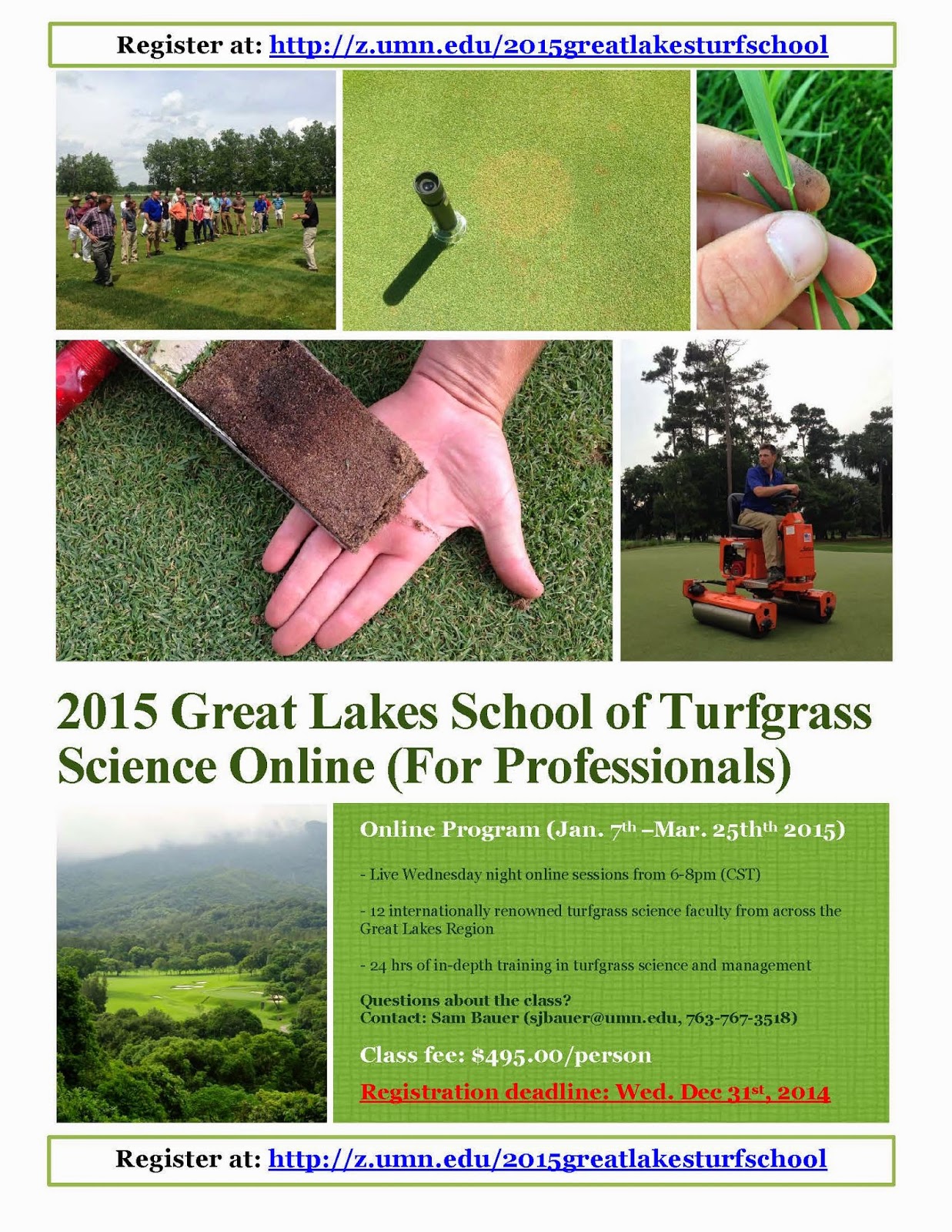A nerd is an intelligent but single-minded person obsessed with a nonsocial hobby or pursuit
1. Therefore, a turf nerd is someone single-minded towards turf, obsessed with turf, and a bit nonsocial. I suppose that described me pretty well.
To help increase your turf nerd quotient (only nerds use words like quotient), I thought I would educate you about 12 words that you might hear a turf nerd use. Try your best to weave one of them into a conversation this week.
12 Words You Might Hear a Turf Nerd Use:
agrostology – the branch of systematic botany that deals with grasses
2. Some of the first turf scientists in the country were first called agrostologists in the early 1900s.
anaeraobic – the absence of molecular oxygen
2. This term is usually used when discussing soils. A soil that is anaerobic is lacking on oxygen. A wet or water-logged soil is anaerobic. Without oxygen in the soil plants suffer and shifts in bacterial populations occur.
apomixis – the laymen’s definition is “clonal reproduction through seeds” which is also known as agamospermy. This one gets complicated, but all you need to know is that Kentucky bluegrass is apomictic which means that when you buy a particular cultivar of Kentucky bluegrass (
Poa pratensis), all the seed you plant will essentially grow-up to be genetically identical to the parent plant. With many other cool-season turfgrass species, the individual seeds are produced through sexual reproduction (intercrossing) of plants with similar traits which results in individual plants within a cultivar that are almost identical or very similar but technically genetically different than one another. Vegetative apomixis can also occur such as with bulbous bluegrass (
Poa bulbosa).
cation – a positively charged ion
2. Examples include calcium (Ca), magnesium (Mg), sodium (Na), and hydrogen (H). These will commonly be referred to as cations on a soil test report. Cation exchange capacity is a measure of the soils ability to retain these positively charged cations on the soil colloid which is negatively charged.
desiccation – the process of being desiccated (which is to dry up) due to the deprivation (another nerdy word) of water
2. Desiccation or drying out is a common term used to describe a specific type of winterkill than can occur in turf when no snow fall is present and when wind speeds are high and windy days are frequent. Desiccation injury to turf is more common in the plains in states such as Nebraska.
dioecious – having staminate and pistillate flowers on separate plants
2. A plant that has separate male and female flowers that usually occur on separate plants. Buffalograss is an example of a turf that is dioecious.
 |
| Male flower |
 |
| Female flower or burr. |
glabrous – having a smooth surface, without hairs
2. When you want to describe that a grass plant is smooth and without hairs, use the term glabrous. The Kentucky bluegrass had a glabrous leaf blade. The opposite is pubescent which means covered with short hairs
3.
hygroscopic – readily capable of absorbing and retaining water from the atmosphere, under normal conditions of temperature, pressure, and humidity
2. You all have experienced this phenomenon whether you know it or not. Most fertilizers are hygroscopic. When you open the fertilizer bag and then come back a few weeks later and all the fertilizer is stuck (caked) together, it is due to the fertilizers hygroscopic nature.
marcelling – A wavy or washboard pattern on the surface cutting plane of mowed turfgrass; usually results where the clip of the reel exceeds the mowing height
4. Marcelling is specific to reel mowers and not an effect seen with rotary mowers.
 |
| Look for the parallel lines running NNW. This is Marcelling. |
mat – Thatch intermixed with mineral matter that develops between the zone of green turf vegetation and the original soil surface; commonly associated with golf course putting greens that have been topdressed
2.
rachilla – subdivisions or branchlets of the rachis that support individual flowers, (seeds), within the spiklet of grasses
2. The axis of a grass spiklet
3. This is the little golf tee looking appendage on a turf seed.
verdure – the quantity of green living plant tissue per unit land area remaining above the soil following mowing at a specified height and usually expressed on a dry weight basis
2. Essentially, this is how much turf is left above the soil surface after mowing. We often measure the mass or the quality (carbohydrates, mineral content, etc.) of verdure in turf research.
I hope you enjoyed this post.
Aaron Patton, Turf and Weed Scientist, Purdue University
Footnotes:
- http://dictionary.reference.com
- From or adapted from Beard, J.B., and H.J. Beard. 2005. Beard’s Turfgrass Encyclopedia for Golf Courses, Grounds, Lawns, Sports Fields. Michigan State University Press, East Lansing.
- Harris, J.G., and M.W.. Harris. 2001. Plant identification terminology: an illustrated glossary. Spring Lake Publishing, Payson, UT.
- Turgeon, A.J. 2008. Turfgrass Management. Pearson Education, Inc. Upper Saddle River, New Jersey.










































.JPG)












